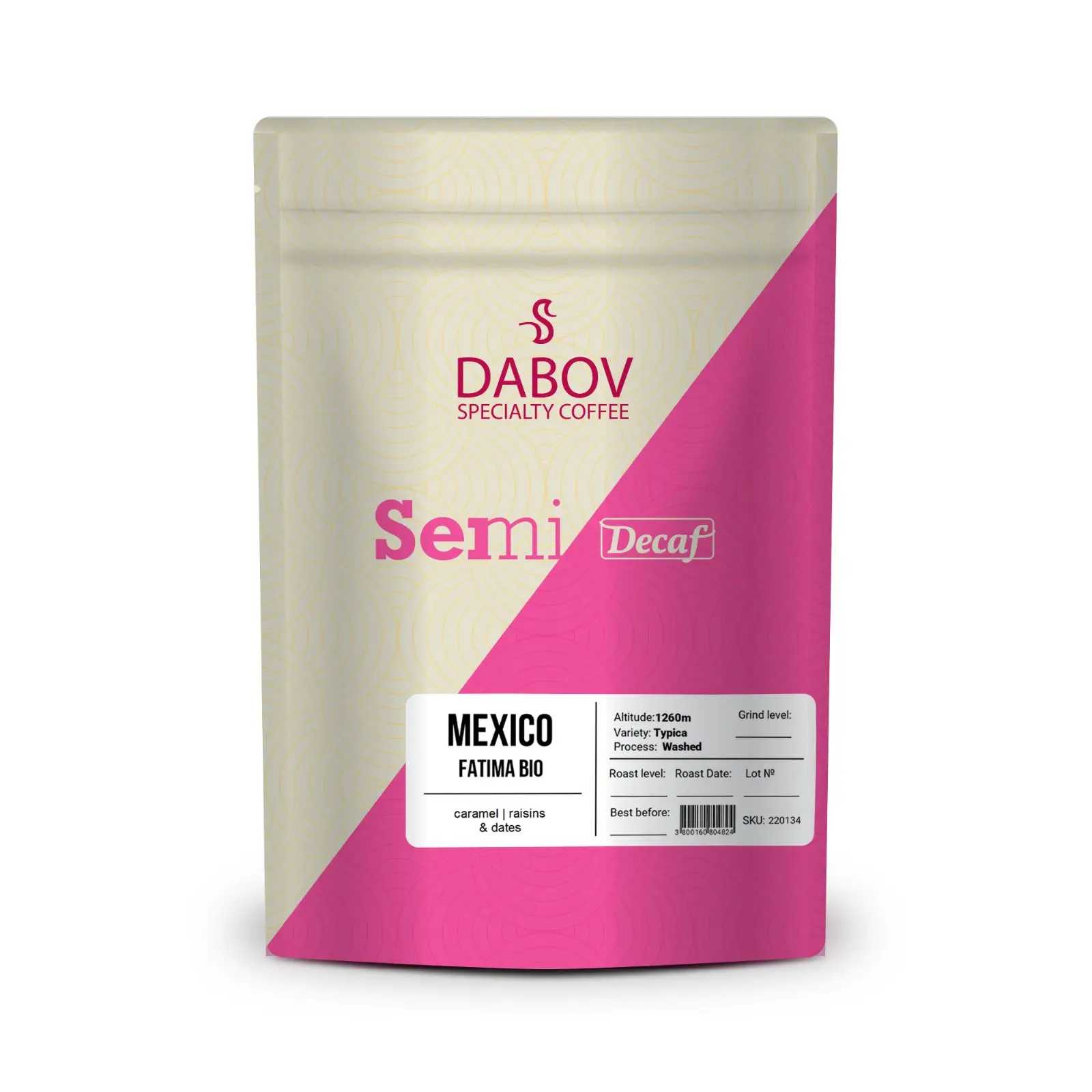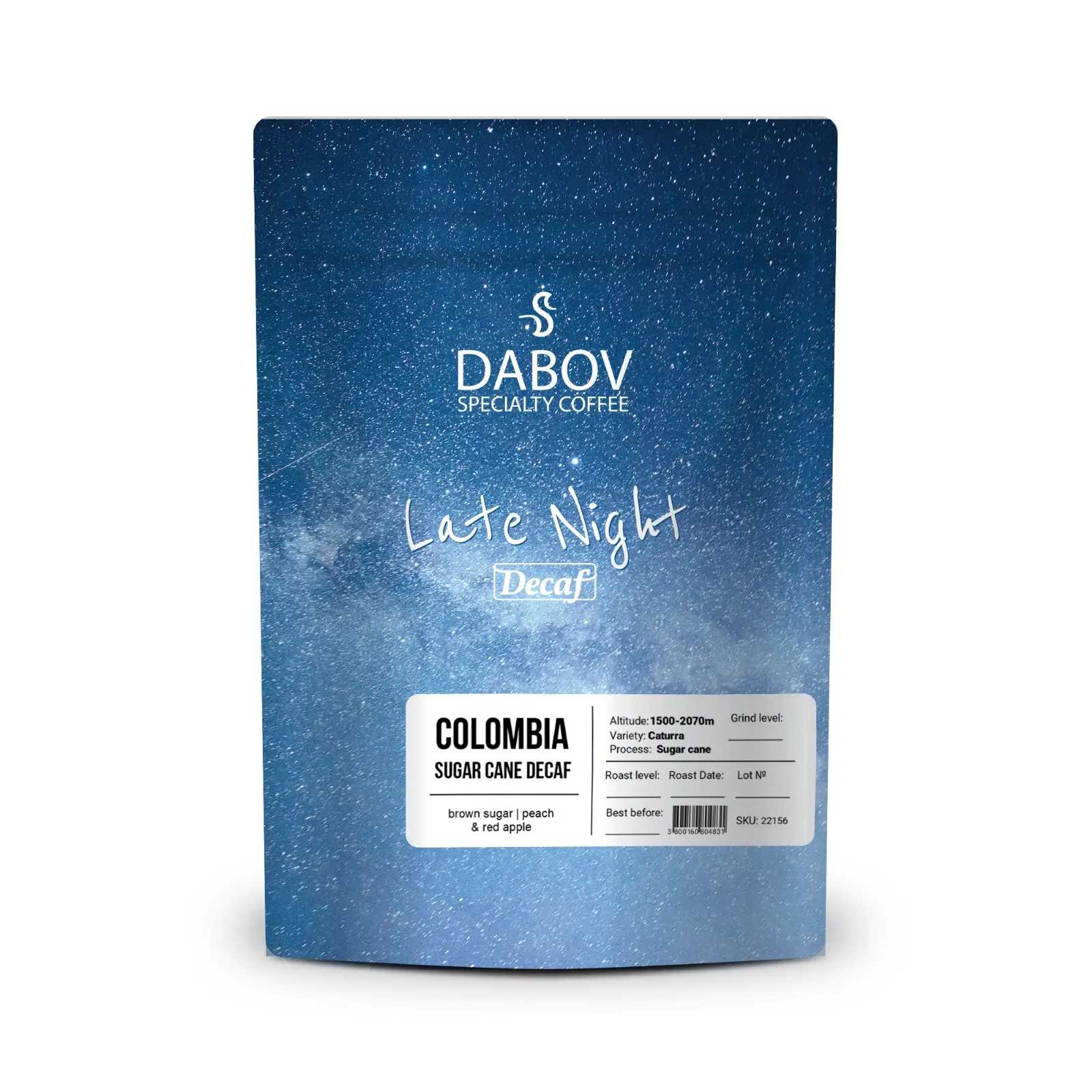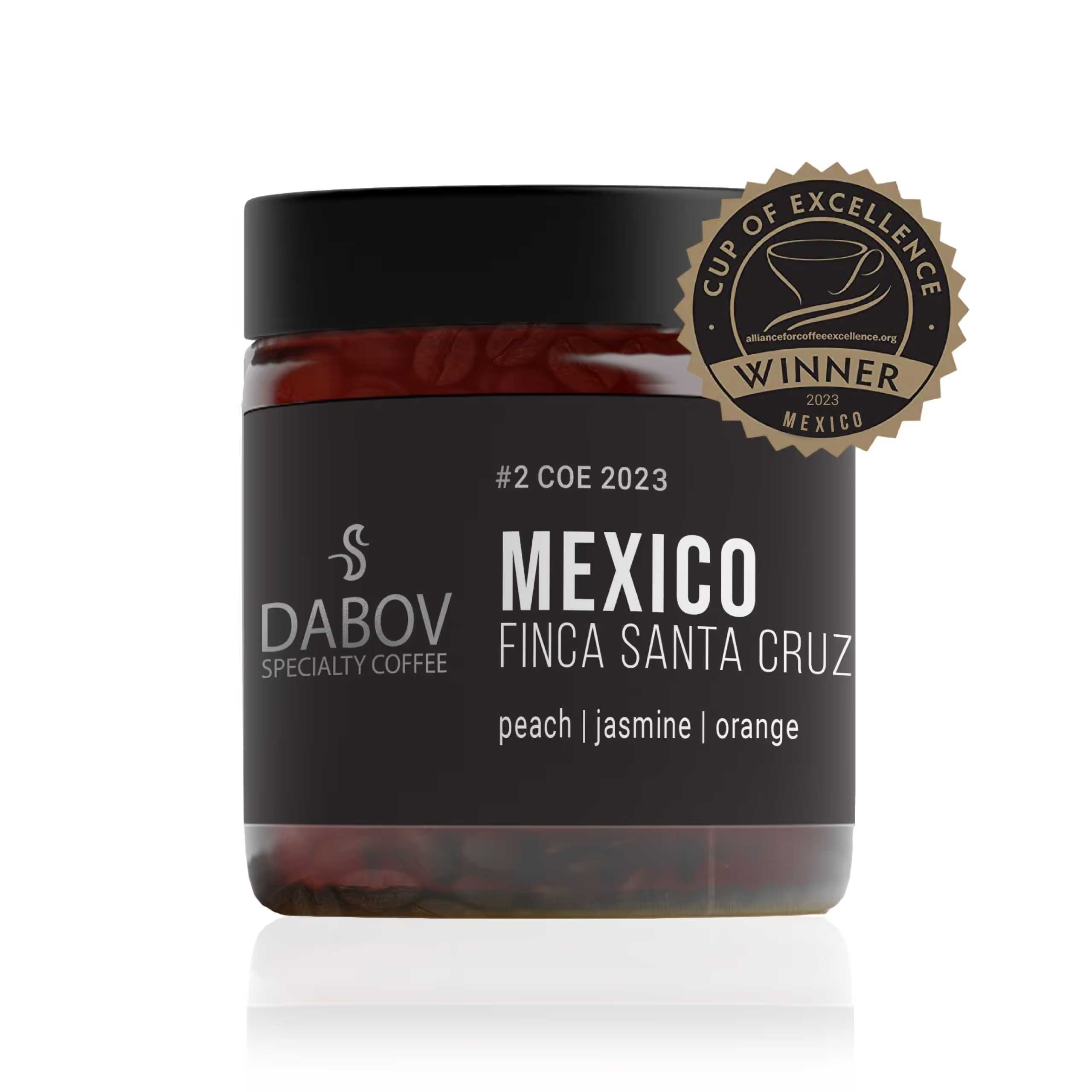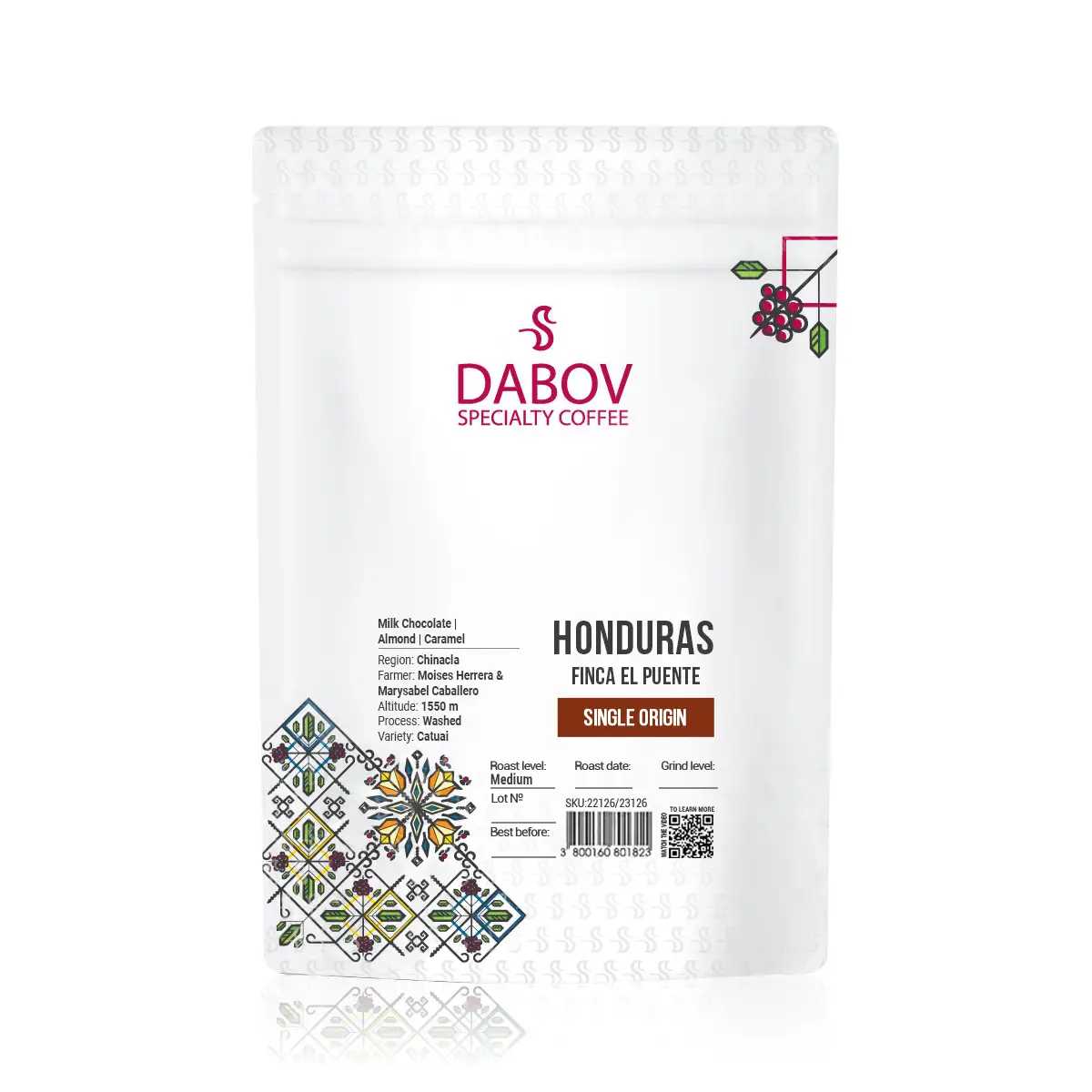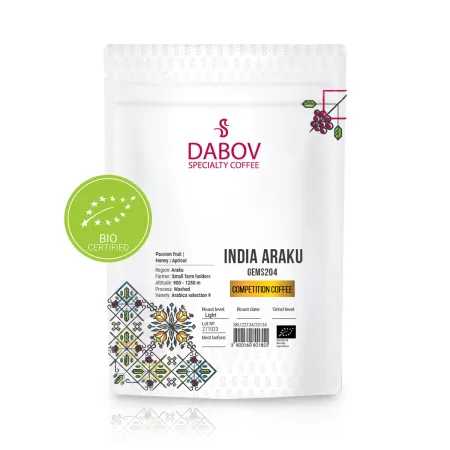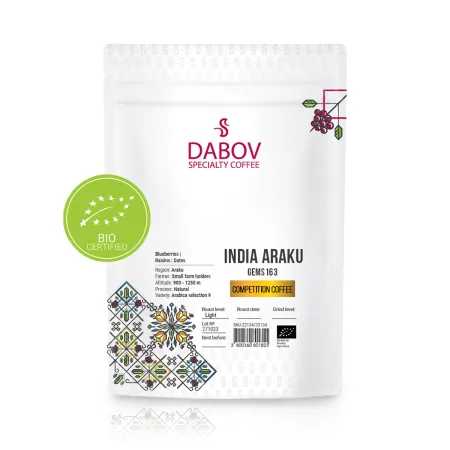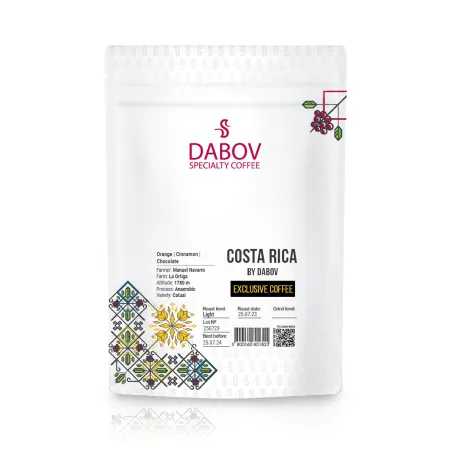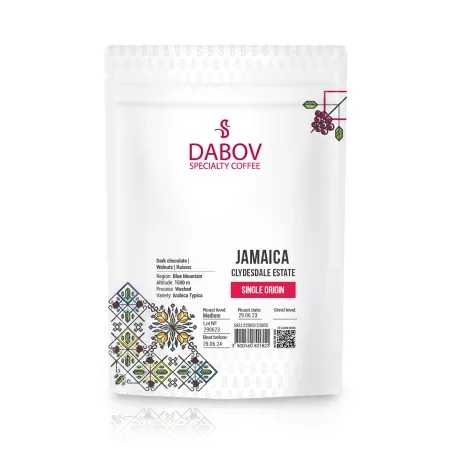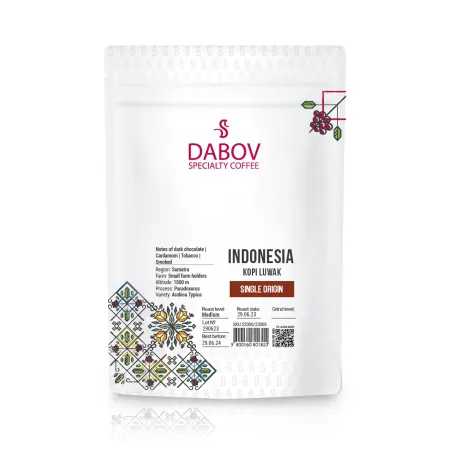Arabica vs. Robusta Which Coffee Bean is Best for Your Brew?
Are you confused between Arabica and Robusta coffee beans? Understanding the unique characteristics of these two types can elevate your coffee experience. Arabica offers a sweet and complex flavor, while Robusta provides a bold and earthy profile. This article explores their growing conditions, caffeine content, and merits in different brewing methods. Whether you're a coffee connoisseur or a casual drinker, knowing the differences is essential for choosing the best coffee beans for your brew. Dive in to discover your perfect cup!
In the world of coffee, two titans reign supreme: Arabica and Robusta. These coffee bean varieties have captivated the palates of coffee enthusiasts worldwide, each offering a unique profile that can make or break your morning brew. As we embark on this caffeinated journey, we'll delve deep into the intricacies of these beans, exploring their distinct characteristics, growing conditions, and the impact they have on your daily cup. Whether you're a casual sipper or a dedicated connoisseur, understanding the nuances between Arabica and Robusta is crucial in elevating your coffee experience to new heights.
Introduction
Coffee, the aromatic elixir that fuels millions of people worldwide, has become an integral part of our daily lives. From the bustling streets of New York to the serene cafes of Paris, coffee culture has permeated societies across the globe. At the heart of this beloved beverage lie two primary types of coffee beans: Arabica and Robusta. These beans form the foundation of the coffee industry, each bringing its own set of flavors, aromas, and qualities to the table.
The purpose of this article is to unravel the mysteries surrounding Arabica and Robusta beans, providing you with the knowledge to make informed decisions about your coffee choices. We'll explore the subtle nuances that set these beans apart, from their growth patterns to their flavor profiles, and ultimately guide you in selecting the perfect bean for your brewing preferences.
Coffee's journey from a simple commodity to a global phenomenon is nothing short of remarkable. With an estimated 2.25 billion cups consumed daily worldwide, coffee has transcended its role as a mere beverage to become a cultural touchstone. The distinction between Arabica and Robusta beans plays a crucial role in this narrative, as these two varieties account for the vast majority of coffee production and consumption globally.
Section 1: Understanding Coffee Beans
1.1 What Are Coffee Beans?
Contrary to popular belief, coffee beans are not actually beans at all. They are the seeds found within the fruit of the coffee plant, commonly referred to as coffee cherries. These cherries, when ripe, are harvested and processed to extract the seeds, which we know as coffee beans. The journey of a coffee bean from farm to cup is a fascinating process that involves multiple stages of cultivation, processing, and roasting.
Coffee plants belong to the genus Coffea, which comprises over 120 species. However, only two of these species are widely cultivated for commercial coffee production: Coffea arabica (Arabica) and Coffea canephora (Robusta). These plants thrive in what is known as the "Bean Belt," a region around the equator between the Tropics of Cancer and Capricorn, where climate conditions are ideal for coffee cultivation.
The life cycle of a coffee bean begins with the flowering of the coffee plant. After pollination, the flowers develop into coffee cherries, which take about 9 months to ripen fully. Once ripe, the cherries are harvested either by hand-picking or mechanical means, depending on the terrain and resources available. The harvested cherries then undergo processing to remove the pulp and extract the seeds.
There are two primary methods of processing coffee beans: the dry method and the wet method. The dry method, also known as natural processing, involves drying the whole coffee cherry in the sun, allowing the pulp to ferment and impart unique flavors to the beans. The wet method, or washed processing, removes the pulp before drying the beans, resulting in a cleaner, more uniform flavor profile.
After processing, the green coffee beans are sorted, graded, and prepared for export. It's at this stage that roasters receive the beans and begin the crucial process of roasting, which transforms the raw, green beans into the aromatic brown beans we're familiar with. The roasting process is an art form in itself, with roasters carefully controlling time and temperature to bring out the desired flavors and aromas in the beans.
1.2 The Two Main Types of Coffee Beans
While there are numerous species of coffee plants, Arabica and Robusta dominate the commercial coffee market, accounting for approximately 99% of global coffee production. These two varieties have distinct characteristics that influence their cultivation, processing, and ultimately, the taste of the coffee in your cup.
Arabica coffee, scientifically known as Coffea arabica, is the more popular of the two, representing about 60-70% of global coffee production. Originating in the highlands of Ethiopia, Arabica coffee is prized for its smooth, complex flavor profile and lower caffeine content. It's often described as having a sweeter, softer taste with notes of sugar, fruit, and berries. The acidity in Arabica coffee contributes to its perceived brightness and can range from a crisp, citrusy quality to a more mellow, wine-like character.
Robusta coffee, derived from the Coffea canephora plant, makes up the remaining 30-40% of global coffee production. As its name suggests, Robusta is a hardier plant, more resistant to disease and capable of growing at lower altitudes than Arabica. Robusta beans are known for their strong, full-bodied flavor with a distinct bitterness and higher caffeine content. The taste profile of Robusta is often described as earthy, with notes of wood and nuts, and a lingering aftertaste that can be perceived as harsh by some palates.
The choice between Arabica and Robusta beans has significant implications for coffee producers, roasters, and consumers alike. Factors such as growing conditions, yield, disease resistance, and market demand all play a role in determining which variety is cultivated in different regions. For coffee drinkers, understanding the differences between these two bean types is crucial in selecting coffees that align with their taste preferences and brewing methods.
Section 2: Arabica vs. Robusta
2.1 Characteristics of Arabica Beans
Arabica coffee beans are renowned for their superior flavor profile, which is characterized by a complex array of taste notes that can vary depending on the specific variety, growing region, and processing method. The flavor of Arabica coffee is generally described as sweet and soft, with a pleasant acidity that contributes to its overall balance and brightness.
One of the most distinctive features of Arabica coffee is its inherent sweetness. This sweetness can manifest in various forms, from subtle hints of brown sugar or caramel to more pronounced fruity notes reminiscent of berries, citrus, or stone fruits. The acidity in Arabica coffee, often described as "bright" or "winey," adds a lively dimension to the flavor profile. This acidity can range from a crisp, clean taste reminiscent of green apples to a more mellow, wine-like quality.
The complexity of Arabica's flavor is further enhanced by aromatic notes that can include floral, nutty, or chocolatey undertones. These nuanced flavors are often more pronounced in single-origin Arabica coffees, where the unique characteristics of a specific growing region can shine through. For example, Ethiopian Arabicas are often noted for their bright, floral qualities, while Colombian Arabicas might exhibit a nuttier, more chocolatey profile.
The growing conditions for Arabica coffee are quite specific, contributing to both its desirable flavor characteristics and its relative scarcity compared to Robusta. Arabica plants thrive in high-altitude environments, typically between 3,000 and 6,000 feet above sea level. These elevated growing regions provide the cool temperatures and steady rainfall that Arabica plants prefer.
The ideal climate for Arabica cultivation features temperatures between 60°F and 70°F (15°C to 21°C), with annual rainfall of about 60 inches (1500mm). These conditions are often found in tropical and subtropical regions near the equator, particularly in mountainous areas. Countries like Colombia, Ethiopia, Kenya, and parts of Central America are renowned for their high-quality Arabica production due to their suitable climates and altitudes.
The specific growing conditions of Arabica coffee contribute significantly to its flavor profile. The slower growth at higher altitudes allows for more complex flavor development within the beans. Additionally, the cooler temperatures and consistent moisture levels help to prevent the rapid maturation that can lead to less flavorful beans.
When it comes to caffeine content, Arabica beans contain significantly less caffeine than their Robusta counterparts. On average, Arabica beans contain about 1.2% caffeine by weight, compared to Robusta's 2.2%. This lower caffeine content contributes to Arabica's smoother, less bitter taste profile.
The reduced caffeine levels in Arabica beans are often seen as a benefit for those who are sensitive to caffeine or prefer a less intense caffeine experience. However, it's worth noting that the actual caffeine content in a cup of coffee can vary depending on factors such as roast level, brewing method, and serving size.
2.2 Characteristics of Robusta Beans
Robusta coffee beans are known for their bold, strong flavor profile that stands in stark contrast to the subtler notes of Arabica. The taste of Robusta coffee is often described as powerful and full-bodied, with a distinctive bitterness that can be polarizing among coffee drinkers.
The flavor profile of Robusta is characterized by its intense, earthy notes. Many describe the taste as having hints of wood, nuts, and dark chocolate. The bitterness in Robusta coffee is more pronounced than in Arabica, which can be attributed to its higher caffeine content and the presence of certain compounds like chlorogenic acids. This bitterness, while off-putting to some, is prized in certain coffee cultures and is an essential component in many espresso blends.
Robusta coffee also tends to have a grainy or rubbery quality to its flavor, which is often described as having a "bite." This characteristic is particularly noticeable in the aftertaste, which can linger on the palate long after the coffee has been consumed. While these flavors might not appeal to all coffee drinkers, they contribute to the robust, full-bodied nature of the coffee that many appreciate.
One of the most significant advantages of Robusta coffee plants is their hardiness and resilience. Unlike the more delicate Arabica plants, Robusta thrives in a wider range of environments and is notably more resistant to pests and diseases. This resilience is one of the primary reasons for Robusta's widespread cultivation, particularly in regions where Arabica might struggle to grow.
Robusta coffee plants can grow at much lower altitudes than Arabica, typically between sea level and 3,000 feet. They prefer warmer temperatures, thriving in climates with average temperatures between 75°F and 85°F (24°C to 29°C). Robusta plants can also tolerate more varied rainfall patterns and are less susceptible to damage from excessive heat or irregular precipitation.
The plant's resistance to pests and diseases is particularly noteworthy. Robusta is naturally resistant to coffee berry borer, one of the most damaging pests in coffee cultivation. It's also less susceptible to coffee leaf rust, a fungal disease that has devastated Arabica crops in various parts of the world. This resilience makes Robusta an attractive option for farmers, especially in regions where environmental conditions or limited resources make pest and disease management challenging.
One of the most distinctive features of Robusta coffee is its high caffeine content. On average, Robusta beans contain about 2.2% caffeine by weight, nearly double the amount found in Arabica beans. This higher caffeine content contributes to Robusta's bitter taste and is one of the reasons it's often used in espresso blends and instant coffee products.
The elevated caffeine levels in Robusta beans serve several purposes. From a plant biology perspective, the higher caffeine content acts as a natural pesticide, contributing to the plant's resistance to pests and diseases. For coffee drinkers, the increased caffeine provides a more potent energy boost, which is particularly appealing to those seeking a strong "wake-up" effect from their coffee.
It's worth noting that while Robusta contains more caffeine, the actual amount of caffeine in a cup of coffee can vary depending on factors such as roast level, brewing method, and serving size. Nevertheless, coffee made exclusively from Robusta beans will generally provide a more significant caffeine kick than an equivalent serving of Arabica coffee.
Section 3: Coffee Bean Comparison
3.1 Taste Test: Arabica vs. Robusta
When it comes to taste preferences, the choice between Arabica and Robusta coffee beans often boils down to individual palates and cultural traditions. Arabica, with its smoother, sweeter profile, tends to be favored by specialty coffee enthusiasts and those who appreciate nuanced flavors. The complex taste notes in Arabica coffee, ranging from fruity and floral to nutty and chocolatey, appeal to those who enjoy exploring the subtle variations in coffee flavors.
On the other hand, Robusta's bold, strong flavor has its own dedicated following. Its intense, earthy taste and full-bodied nature are particularly appreciated in cultures where coffee is traditionally brewed strong, such as in Vietnam or parts of Southern Europe. The pronounced bitterness of Robusta can be a desirable quality in espresso blends, where it contributes to the rich crema and robust flavor that many espresso lovers seek.
The implications of these taste preferences on coffee brews are significant. For pour-over or drip coffee methods, Arabica beans are often preferred due to their ability to showcase delicate flavor notes. The lower bitterness and acidity of Arabica make it more palatable when consumed black, allowing drinkers to appreciate the bean's inherent flavors without the need for milk or sugar.
Robusta, with its stronger flavor and higher caffeine content, is frequently used in espresso blends to add depth and crema. It's also a common choice for instant coffee production due to its lower cost and ability to maintain flavor through the freeze-drying process. In some coffee cultures, such as in Italy, a small percentage of Robusta is often added to espresso blends to enhance the crema and add a kick to the flavor profile.
When it comes to brewing methods, different techniques can highlight or mute certain characteristics of each bean type. For Arabica beans, methods that allow for precise control over water temperature and extraction time, such as pour-over or French press, can help to bring out the bean's subtle flavors and aromas. These methods allow for a slower extraction process, which is ideal for showcasing the complex taste notes of high-quality Arabica beans.
Robusta beans, with their stronger flavor profile, can stand up well to more intense brewing methods. Espresso machines, which use high pressure to force hot water through finely ground coffee, can extract the full-bodied flavor of Robusta beans effectively. The high pressure also helps to create the thick crema that is characteristic of a good espresso shot.
For cold brew methods, both Arabica and Robusta can produce interesting results. The long steeping time in cold water tends to mellow out some of the harsher notes in Robusta, while bringing out the chocolatey and nutty flavors. With Arabica, cold brew can highlight the bean's natural sweetness and reduce perceived acidity, resulting in a smooth, refreshing drink.
It's worth noting that many commercial coffee blends combine both Arabica and Robusta beans to achieve a balance of flavor, body, and cost. The ratio of Arabica to Robusta in these blends can vary widely, with higher-end blends typically containing a larger proportion of Arabica beans.
3.2 Cost Comparison
The price difference between Arabica and Robusta beans is a significant factor in the coffee industry, influencing everything from farming practices to consumer choices. Historically, Arabica beans have commanded a higher price in the market due to their superior flavor profile and more challenging cultivation requirements.
Market price fluctuations for coffee beans are influenced by a complex interplay of factors, including supply and demand, weather conditions in major growing regions, currency exchange rates, and global economic trends. Arabica prices tend to be more volatile than Robusta, largely due to the plant's sensitivity to environmental conditions. Frost or drought in major Arabica-producing countries like Brazil can lead to significant price spikes in the global market.
As of 2023, Arabica beans typically cost 50-100% more than Robusta beans on the global commodity market. This price premium reflects not only the perceived quality difference but also the higher production costs associated with Arabica cultivation. The plants require more specific growing conditions, are more susceptible to pests and diseases, and generally yield fewer beans per plant compared to Robusta.
Robusta's lower price point is one of the primary reasons for its widespread use in instant coffee production and as a filler in less expensive coffee blends. The plant's higher yield and greater resistance to pests and diseases make it a more economically viable option for farmers in many regions, particularly in countries like Vietnam, which has become the world's largest producer of Robusta coffee.
The economic factors involved in coffee bean pricing are multifaceted. For Arabica, the cost of production is higher due to the need for specific altitudes, more labor-intensive harvesting (often done by hand due to mountainous terrain), and more careful processing to preserve the bean's delicate flavors. Additionally, the smaller yields per plant and longer maturation times for Arabica contribute to its higher market price.
Robusta, on the other hand, benefits from lower production costs. The plants are hardier, require less specific care, and can be grown at lower altitudes where mechanized harvesting is more feasible. Higher yields per plant and faster maturation times also contribute to Robusta's cost-effectiveness.
When assessing which type of bean offers better value for money, it's essential to consider both price and quality in relation to individual brewing preferences. For coffee enthusiasts who prioritize complex flavors and are willing to pay a premium for high-quality beans, Arabica often represents better value despite its higher cost. The nuanced taste profile and potential for showcasing unique regional characteristics make Arabica the bean of choice for specialty coffee and gourmet brews.
However, for those who prefer a stronger, more caffeinated cup or use their coffee primarily in milk-based drinks where subtle flavors might be masked, Robusta can offer excellent value. Its lower price point makes it an attractive option for daily consumption, especially for those who drink multiple cups a day.
It's also worth noting that the quality spectrum within each bean type is vast. A high-quality Robusta can potentially offer better value and taste than a low-quality Arabica. Factors such as growing conditions, processing methods, and roasting expertise play crucial roles in determining the final quality of the coffee, regardless of whether it's Arabica or Robusta.
Section 4: Choosing Coffee Beans for Your Brew
4.1 Factors to Consider
When selecting coffee beans for your brew, personal taste preferences should be the primary guiding factor. The wide range of flavors available in both Arabica and Robusta beans means there's likely a perfect match for every palate. To determine your preferences, it's helpful to sample a variety of coffees, paying attention to aspects like acidity, bitterness, body, and aftertaste.
If you enjoy a smooth, nuanced coffee with hints of sweetness and fruit, you might lean towards high-quality Arabica beans. Look for descriptors like "bright," "clean," or "complex" on coffee packaging. Single-origin Arabicas can offer unique flavor profiles characteristic of their growing regions, such as the wine-like acidity of Kenyan coffee or the floral notes of Ethiopian varieties.
For those who prefer a strong, bold coffee with a pronounced bitterness and full body, Robusta beans or Arabica-Robusta blends might be more satisfying. These coffees often have descriptors like "strong," "intense," or "full-bodied." If you typically add milk or sugar to your coffee, the robust flavor of these beans can stand up well to additives.
It's also worth considering your sensitivity to caffeine. If you're looking for a significant energy boost, Robusta's higher caffeine content might be appealing. Conversely, if you're sensitive to caffeine or prefer to limit your intake, Arabica beans might be a better choice.
The brewing method you prefer can significantly influence your choice of coffee beans. Different brewing techniques extract flavors from coffee beans in varying ways, and some beans are better suited to certain methods than others.
For pour-over or drip coffee makers, light to medium roast Arabica beans often work well. These methods allow for the extraction of delicate flavors, showcasing the bean's inherent characteristics. Single-origin Arabicas can be particularly rewarding when brewed this way, as the method allows their unique flavor profiles to shine.
Espresso machines typically perform well with medium to dark roast beans. While traditionally associated with Arabica-Robusta blends, many specialty coffee shops now offer single-origin Arabica espressos. The high pressure in espresso brewing can extract rich, intense flavors from the beans, making it suitable for both Arabica and Robusta.
For French press or cold brew methods, which involve longer steeping times, both Arabica and Robusta can produce interesting results. The French press tends to produce a full-bodied cup, which can complement the natural strength of Robusta or bring out the richer notes in a dark roast Arabica. Cold brew's long extraction time in cold water can mellow out some of the harsher notes in Robusta while enhancing the natural sweetness of Arabica.
If you use a Moka pot or other stovetop espresso maker, medium to dark roast beans are often preferred. These methods produce a strong, concentrated coffee, similar to espresso, and can work well with both Arabica and Robusta beans or blends.
For instant coffee drinkers, Robusta beans are often used due to their lower cost and ability to maintain flavor through the freeze-drying process. However, premium instant coffees made from Arabica beans are also available for those seeking a higher-quality instant option.
4.2 Specialty vs. Commercial Coffee Beans
The distinction between specialty and commercial coffee beans is crucial in understanding the quality spectrum of both Arabica and Robusta. Specialty coffee refers to beans that meet high standards of quality throughout the production process, from cultivation to processing and roasting. These beans are typically scored 80 points or above on a 100-point scale by certified coffee tasters.
Specialty coffee is most commonly associated with Arabica beans due to their superior flavor profile and potential for complex taste notes. These beans are often single-origin, meaning they come from a specific farm, region, or country, allowing for traceability and the expression of unique terroir-influenced flavors. Specialty Arabicas are prized for their distinct taste characteristics, which can range from fruity and floral to nutty and chocolatey, depending on their origin and processing method.
While less common, specialty Robusta does exist. These are high-quality Robusta beans that have been carefully cultivated and processed to bring out the best flavors the variety can offer. Specialty Robusta can exhibit more refined taste notes compared to commercial Robusta, with some connoisseurs appreciating its intense, full-bodied flavor and higher caffeine content.
Commercial-grade beans, on the other hand, are those that meet basic quality standards but may not have the same level of care in cultivation and processing as specialty beans. These are often used in mass-market coffee products and value-priced blends. Commercial-grade beans can be either Arabica or Robusta, with Robusta being more common due to its lower cost and higher yield.
The quality difference between specialty and commercial beans is significant. Specialty beans are often hand-picked at peak ripeness, carefully processed to preserve flavor, and roasted in small batches to ensure optimal taste. Commercial beans may be mechanically harvested (which can result in the picking of under-ripe or over-ripe cherries), processed in large batches, and roasted in high volumes, potentially leading to less consistent quality.
Sustainability is an increasingly important consideration in coffee production, particularly when it comes to Arabica beans. The more delicate nature of Arabica plants makes them more susceptible to climate change, pests, and diseases, raising concerns about the long-term sustainability of Arabica production.
Many specialty coffee producers are at the forefront of sustainable farming practices. These can include shade-grown cultivation, which promotes biodiversity and helps protect the plants from extreme weather; organic farming methods that avoid harmful pesticides; and fair trade practices that ensure better wages and working conditions for coffee farmers.
Arabica's sensitivity to environmental conditions has led to increased research into developing more resilient varieties that can withstand changing climate patterns while maintaining desirable flavor profiles. This research is crucial for the future of high-quality coffee production, especially in regions where traditional Arabica cultivation is under threat from rising temperatures or increased pest activity.
Robusta, being naturally more resistant to pests and adaptable to various growing conditions, is often seen as a more sustainable option from a cultivation perspective. However, the expansion of Robusta plantations has been associated with deforestation in some regions, raising environmental concerns.
When choosing between specialty and commercial beans, consumers increasingly factor in sustainability alongside quality and price. Many coffee drinkers are willing to pay a premium for beans that are not only high in quality but also produced in environmentally and socially responsible ways. This trend has led to an increase in certifications such as Rainforest Alliance, Bird Friendly, and various organic and fair trade labels in the coffee industry.
Section 5: Tips for Brewing the Best Coffee
5.1 Brewing Techniques for Arabica
To fully appreciate the nuanced flavors of Arabica beans, proper brewing techniques are essential. The delicate nature of Arabica's flavor profile requires careful attention to water temperature, grind size, and brewing time to achieve optimal extraction.
For Arabica beans, the recommended water temperature typically falls between 195°F and 205°F (90°C to 96°C). This temperature range is ideal for extracting the bean's complex flavors without introducing bitterness or acidity. Water that's too hot can over-extract the coffee, leading to a bitter taste, while water that's too cool may result in under-extraction and a weak, sour brew.
The grind size for Arabica beans should be adjusted based on the brewing method. For drip coffee makers, a medium grind is usually appropriate. Pour-over methods often benefit from a medium-fine grind, while French press requires a coarser grind to prevent over-extraction and sediment in the cup. Espresso, on the other hand, requires a very fine grind to allow for proper extraction under high pressure.
When brewing Arabica coffee, pay attention to the ratio of coffee to water. A common starting point is about 1:16 (one part coffee to 16 parts water), but this can be adjusted to taste. For pour-over methods, a slow, steady pour in a circular motion helps ensure even extraction. With French press, a steeping time of about 4 minutes is typical, but this can be adjusted based on personal preference and the specific beans being used.
Freshness is crucial when brewing Arabica coffee. Beans begin to lose their flavor soon after roasting, so it's best to buy freshly roasted beans and use them within two to three weeks. Grinding the beans just before brewing helps preserve their aromatic compounds and ensures the freshest possible taste.
5.2 Brewing Techniques for Robusta
Robusta beans, with their stronger flavor profile and higher caffeine content, require slightly different brewing approaches to bring out their best qualities. The goal when brewing Robusta is often to highlight its full body and intense flavors while managing its natural bitterness.
For Robusta, water temperature can be on the higher end of the spectrum, around 200°F to 205°F (93°C to 96°C). The higher temperature helps to extract the full range of flavors from the dense Robusta beans. However, be cautious not to use water that's too hot, as this can exacerbate Robusta's natural bitterness.
Grind size for Robusta can generally be slightly coarser than what you might use for Arabica, especially if you're looking to reduce bitterness. For drip coffee makers, a medium to medium-coarse grind often works well. For espresso, a fine grind is still necessary, but it might be slightly coarser than what you'd use for Arabica to prevent over-extraction.
Robusta coffee often benefits from brewing methods that produce a strong, full-bodied cup. Espresso machines are particularly well-suited for Robusta, as the high pressure can extract a rich, intense flavor and create a thick crema. Moka pots and other stovetop espresso makers also work well with Robusta beans, producing a strong, concentrated brew.
For those who enjoy cold brew, Robusta can be an excellent choice. The long steeping time in cold water tends to mellow out some of Robusta's harsher notes while still producing a strong, caffeinated drink. When making cold brew with Robusta, you might find that a shorter steeping time (12-18 hours) is sufficient compared to what you might use for Arabica.
When brewing Robusta, the coffee-to-water ratio can often be slightly lower than what's used for Arabica. A ratio of about 1:14 or 1:15 can help balance the strong flavors of Robusta. However, as always, this can be adjusted based on personal taste preferences.
5.3 Common Mistakes to Avoid
When brewing coffee, whether with Arabica or Robusta beans, there are several common mistakes that can negatively impact the quality of your brew. Being aware of these pitfalls can help you consistently produce better coffee.
One frequent error is using water that's too hot, especially with Arabica beans. Boiling water (212°F/100°C) can scald the coffee, resulting in a bitter, over-extracted brew. Always let your water cool for a moment after boiling, or use a thermometer to ensure the correct temperature.
Another mistake is using the wrong grind size for your brewing method. For example, using a fine espresso grind in a French press will result in over-extraction and a muddy cup, while using a coarse grind for espresso will lead to under-extraction and weak coffee. Invest in a good grinder and experiment with different grind sizes to find what works best for your brewing method and taste preferences.
Inconsistent measuring of coffee and water can lead to unpredictable results. Using a scale to weigh your coffee and water can help ensure consistency from brew to brew. This is particularly important when trying to dial in the perfect recipe for a new type of bean.
Neglecting to clean your coffee equipment regularly can lead to a build-up of coffee oils and residue, which can impart off-flavors to your brew. Make sure to clean your grinder, brewing equipment, and storage containers regularly to maintain the purity of your coffee's flavor.
For Arabica beans, a common mistake is not paying attention to the roast date. Unlike wine, coffee does not improve with age. Using beans that are too old (generally more than a month past their roast date) can result in a flat, lifeless cup of coffee.
With Robusta beans, a frequent error is over-extraction, which can exacerbate their natural bitterness. This can happen if the brewing time is too long or if the grind is too fine for the chosen brewing method. Pay close attention to your brewing parameters and be prepared to adjust them when switching between Arabica and Robusta beans.
Lastly, storing coffee improperly can quickly degrade its quality. Exposure to air, moisture, heat, and light can all negatively impact coffee's flavor. Store your beans in an airtight container in a cool, dark place, and avoid refrigerating or freezing them unless absolutely necessary.
Section 6: Conclusion
6.1 Summary of Key Points
As we've explored throughout this article, the choice between Arabica and Robusta coffee beans is not simply a matter of one being superior to the other. Rather, each variety offers unique characteristics that cater to different preferences and brewing methods.
Arabica beans, with their smooth, complex flavor profile and lower caffeine content, are often preferred for their nuanced taste notes ranging from fruity and floral to nutty and chocolatey. They thrive in specific growing conditions at higher altitudes, which contributes to their more delicate flavors but also makes them more challenging and expensive to produce.
Robusta beans, on the other hand, offer a stronger, more bitter flavor with higher caffeine content. They are hardier plants that can grow in a wider range of conditions, making them more resistant to pests and diseases. This resilience translates to lower production costs, which is why Robusta is often used in instant coffee and as a component in espresso blends.
The brewing process for each type of bean requires attention to different factors. Arabica beans generally benefit from slightly lower water temperatures and more precise brewing techniques to bring out their subtle flavors. Robusta beans can withstand higher temperatures and are well-suited to methods that produce strong, full-bodied coffee.
In terms of market dynamics, Arabica beans typically command higher prices due to their perceived superior quality and more challenging cultivation requirements. Robusta, being more economical to produce, offers a lower-cost alternative that's particularly popular in certain coffee cultures and in the production of instant coffee.
The distinction between specialty and commercial-grade beans adds another layer to the Arabica vs. Robusta discussion. While specialty coffee is most commonly associated with high-quality Arabica beans, there is a growing appreciation for specialty Robusta as well.
Sustainability considerations are becoming increasingly important in coffee production. The sensitivity of Arabica plants to climate change has raised concerns about long-term sustainability, while Robusta's hardiness offers some advantages in this regard. However, sustainable farming practices are crucial for both varieties to ensure the future of coffee production.
6.2 Final Recommendations
In the quest for the perfect cup of coffee, there's no one-size-fits-all solution. The best coffee bean for your brew ultimately depends on your personal taste preferences, brewing method, and even lifestyle factors like caffeine sensitivity.
For those who appreciate subtle, complex flavors and are willing to invest time and resources into their coffee experience, high-quality Arabica beans are often the way to go. They're particularly well-suited to brewing methods that allow for precise control over extraction, such as pour-over or carefully calibrated espresso shots.
If you prefer a stronger, more robust coffee with a higher caffeine kick, Robusta beans or Arabica-Robusta blends might be more to your liking. These are excellent choices for espresso-based drinks, especially those with milk, where the strong flavor can cut through effectively.
Don't be afraid to experiment with different beans, roast levels, and brewing methods. Coffee appreciation is a journey, and your preferences may evolve over time. Try single-origin coffees to experience the unique characteristics of different growing regions, or explore various blends to find a balance of flavors that suits your palate.
Consider the ethical and environmental implications of your coffee choices. Look for beans that are sustainably sourced, whether they're Arabica or Robusta. Many coffee roasters now provide detailed information about their sourcing practices, allowing you to make informed decisions that align with your values.
Remember that freshness is key, regardless of the type of bean you choose. Buy whole beans and grind them just before brewing whenever possible. Pay attention to roast dates and try to use your coffee within a few weeks of roasting for the best flavor.
Lastly, don't underestimate the importance of proper brewing technique. Even the highest quality beans can produce a subpar cup if not brewed correctly. Take the time to learn about different brewing methods and how to optimize them for your chosen beans.
Whether you're a devoted Arabica aficionado, a Robusta enthusiast, or someone who appreciates both, the world of coffee offers endless opportunities for exploration and enjoyment. Embrace the



